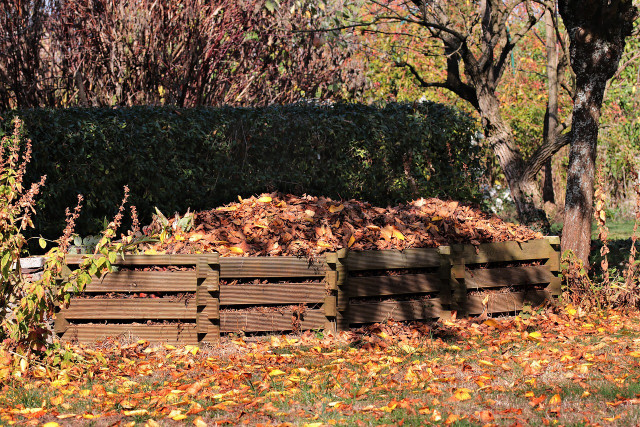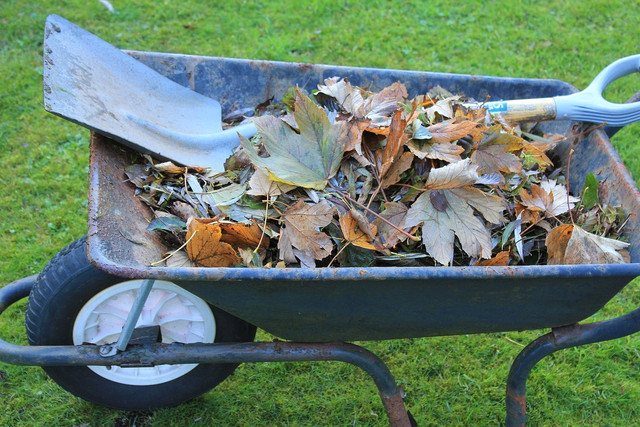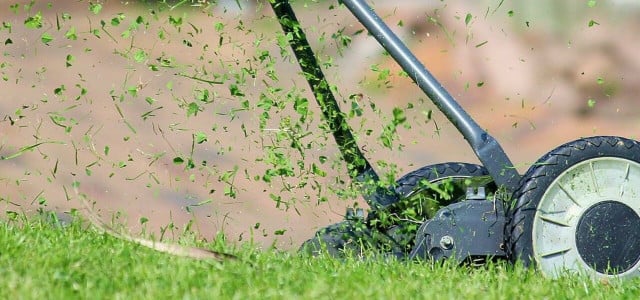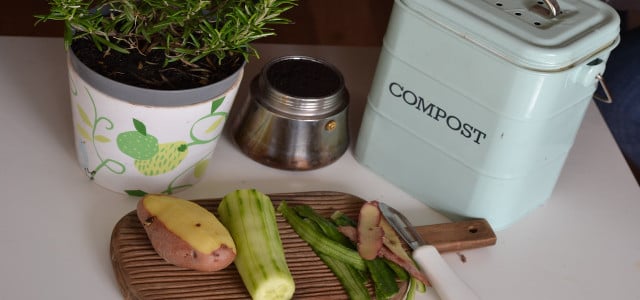Learning how to compost leaves is a great way to give your garden an extra boost. Read on for 3 different ways to compost leaves.
Composting leaves is a great way to add minerals and nutrients like magnesium, potassium, and phosphorous to your compost pile that your plants will thank you for later. Leaf composting also helps to reduce the amount of waste in landfills and in your home.
For more detailed information about composting, check out: How Does Composting Work? A Step-By-Step Guide
How to Compost Leaves: Composting Leaves in a Bin or Pile

(Foto: CC0 / Pixabay / pixel2013)
- Shred the leaves using your lawnmower, using its bag to capture them.
- Add some of the shredded leaves to a compost bin, if you’ve already started one, or start a leaf/compost pile.
- Add a nitrogen-rich item such as food waste (i.e. coffee grounds), extra grass clippings, or manure. This will help to break down the leaves.
- Continue adding shredded leaves and your chosen nitrogen item alternatively until your pile is about three feet tall or fills the compost bin with room for air circulation. This means that the bin should not be completely full: you need air and moisture to circulate in the pile for the composting to work properly.
- Stir the pile/bin one to two times per week to ensure air and moisture are circulating through the pile properly. Add nitrogen items (“green items”) such as food waste and grass clippings as you stir.
- Cover the pile or keep it inside a shed to keep warmth and air inside. This will help the compost to turn more quickly. In colder temperatures, only turn compost if it is insulated.
- Use finished compost! Finished compost will be dark, dry, and crumbly and will smell earthy.
More Tips:
- If you notice the pile is very dry, you can add water.
- If the compost pile begins to smell rotten or has mold, this is usually a sign that the pile is too wet. Add drying ingredients to the pile such as sawdust or more dry leaves.
Composting Leaves as a Top Soil
If you do not want to compost your leaves in a bin, or don’t have the space to do a three-foot-tall pile, you can compost leaves as topsoil for your garden. Here’s how:
- Shred leaves with your lawnmower and use the lawn bags to capture them.
- Remove the shredded leaves from the bag and lay them in a layer across your garden.
- Add a layer of green nitrogen items, such as grass clippings, on top of the shredded leaves.
- The combination of these two layers protects your garden from the elements, such as rain and wind, that may erode the soil’s nutrients with time.
Composting Leaves as a Leaf Mold
Leaf mold is a more gradual process of composting as it slowly adds nutrients to the soil and increases water retention. It is simple to make:
- Shred leaves with a lawnmower and place them in a well-ventilated bin (either something that has air holes or is made of wire or wood).
- Add water to the leaves until they feel damp, but not fully soaked.
- Seal the bin, but leave air holes for air circulation.
- Stir the pile every few weeks and add water as the leaves dry.
- Use the finished leaf mold, which looks black or brown and is crumbly, as a till for gardening beds, or mulch for perennials or vegetables.
Which Leaves Should You Use for Composting?



(Foto: CC0 / Pixabay / bluebudgie)
In order to obtain the best compost, you need the right leaves that add the right nutrients and minerals to the compost pile. Some leaves that work well include: ash, maple, fruit tree leaves, poplar, willow, cherry, black cherry, and elm.
Leaves that are too low in nitrogen and calcium will not add to your compost pile and should be used in moderation. These include beech, oak, holly, ginkgo, and sweet chestnut.
There are also some leaves that should never be added to a compost pile because they add toxins that may actually break down the garden. These include black walnut, buckeye, and eucalyptus.
Read on:
- Checklist: How to Prepare Your Garden for Winter
- Propagating Succulents from Leaves and Cuttings in 6 Easy Steps
- Urban Gardening – 6 Creative Tips and Ideas
- 5 Uses for Rhubarb Leaves: Don’t Let Them Go to Waste
Do you like this post?








